- Home
- William Shakespeare
Julius Caesar Page 13
Julius Caesar Read online
Page 13
William Bridges-Adams succeeded Benson at Stratford in 1919 and was the first director to restore a completely uncut text. Reviewers appreciated the additions: where Act 3 Scene 1 had traditionally ended with “Cry havoc and let slip the dogs of war,” the restored scene with Octavius’ servant “gives the key to the future action of Mark Antony,”21 and allowed Bridges-Adams to begin questioning Caesar’s motivations. Later developments included Stanley Lothbury’s “querulous, snarling, decrepit old man” of a Caesar and Baliol Holloway’s Antony as “fawning demagogue” in 1922.22 By 1934, John Wyse’s Brutus “seemed never more noble,” while Eric Maxon’s Caesar succeeded through “restrained force of expression in making Caesar bigger than the Caesar Shakespeare drew.”23 Iris Guillaume’s Calpurnia was cast as a Mary Magdalene figure, though reviews still complained that “women have little place in Julius Caesar.”24 An “interpolated picture of Antony viewing a burning Rome while a beggar clutches at his legs”25 was, however, ridiculed.
The most influential stage production of the century, Orson Welles’s Julius Caesar: The Death of a Dictator, opened at New York’s Mercury Theater in November 1937. Welles “set about to arouse the passions of his audience with a simulation of the chaos then overtaking Europe,”26 rendering the play terrifyingly relevant. The script was severely pared down to focus on Caesar, Brutus, and the mob. One notable inclusion was the restoration of the lynching of Cinna the Poet: “The Mercury audience made Cinna’s experience their own, representing as it did their worst fears for themselves and for those dearest to them abroad.”27 Welles’s self-consciously theatrical production was performed in modern dress, deliberately evoking Mussolini and fascism to generate a sense of pity and horror at atrocities across the Atlantic. The production’s backstage story was turned into a 2009 Hollywood movie, Me and Orson Welles. Antidictatorial readings of the play have since been commonplace: a 1969 production in Minneapolis was set in Latin America with Caesar as “an aspiring sun-god in white and gold,”28 while in Miami in 1986 audiences were “brought to their feet by the spectacle of the assassins bathing their hands in the blood of Caesar as Fidel Castro.”29
Also influential was Joseph L. Mankiewicz’s 1953 motion picture starring James Mason (Brutus), John Gielgud (Cassius), and Marlon Brando (Antony). The Forum scene incorporated 1,200 extras, though the individual performances were praised as much as the grand spectacle. Gielgud played Cassius as “the vulgar abstraction of personal jealousy,”30 while Brando’s physical Antony was “all fire and ice.”31 As with Welles’s stage production, Mankiewicz “understood the tragedy’s message … : Caesar was a Mussolini-like dictator, and Antony his chief factor—A Hitler who realises the fascist dream of his mentor.”32 Stuart Burge directed another film in 1970, but even the presence of Gielgud (Caesar) and Charlton Heston (Antony) couldn’t salvage an obviously cheap and poorly produced production.
In Stratford-upon-Avon, Anthony Quayle and Michael Langham’s 1950 production on an unlocalized stage was fast and efficient: “John Gielgud as Cassius has never before shown such sustained vehemence … Cassius is beyond question the most important person of every scene in which he figures, even when he is stooping low and looking daggers at great Caesar himself.”33 The fickleness of the mob was strongly emphasized, but after the tent scene “the rest is a mopping-up operation of Caesar’s ghost, alarms and excursions, and the inevitable falling on antique swords”:34 a regular complaint against productions. Rare praise was reserved for Portia, from whom Gwen Ffrangcon-Davies “extracts every shade of sympathy and emotion … an exquisite performance, this, sad with a melancholy that achieves a brief and touching beauty,”35 but Quayle’s own performance as Antony was “obliterated” by the mob.
Glen Byam Shaw’s 1957 Stratford production was played in togas against a backdrop of pillars. Returning the focus to Brutus, Alec Clunes was a “liberal idealist all too closely snared by more self-interested conspirators.”36 Mark Dignam’s sardonic Casca, played with “a neatly calculated edge of rueful self-enjoyment,”37 was singled out for particular praise by all reviewers, the part continuing to stand out; while the interval curtain fell on the image of “Cinna, the poet, wrongfully stoned to death by the crowd, hanging over the pulpit of the Forum from which Mark Antony has inspired a city’s mutiny.”38
The play’s popularity on foreign stages has taken various forms. In South Africa, following the public assassination of Prime Minister Hendrik Verwoerd in 1960, “productions of Julius Caesar became charged with an increased energy, became, in a sense, symbolic re-enactments of the assassination of Verwoerd, who himself had come to signify the ideals of Grand Apartheid.”39 During the apartheid era, productions were generally read as conservative and anti-revolutionary, a demonstration of the penalty for violent uprising. In Munich in 1955, conversely, Fritz Kortner aimed for ambivalent responses: at the moment of assassination, Brutus “hesitated, and there was a long agonizing pause before ‘he resolved matters with his stab to the heart.’ ”40 Of more interest to Kortner than judgments of “right” or “wrong” was the mindless butchery into which the climactic violence descended.
The Shakespeare Festival at Stratford Ontario has produced the play several times. In 1978, an excitingly experimental production by John Wood received rave reviews. In brooding darkness, the stage was suddenly illuminated during the assassination: “so great was the contrast that the white light in which the slaying was bathed seemed blinding and almost obscene … the event seemed as ritualized as an act of purification and as appalling as an act of desecration.”41 The production took the further innovation of removing the mob altogether, leaving Antony alone onstage for a funeral oration that acted as psychological self-exploration. In 1982, Derek Goldby’s production “offended many critics with its harsh violence and its forceful but simplistic treatment of mob psychology.” While individual performances were weak, its “vision of a system tearing itself apart”42 was compelling.
2. Glen Byam Shaw’s 1957 Stratford production: “the interval curtain fell on the image of ‘Cinna, the poet, wrongfully stoned to death by the crowd.’ ”
Gielgud returned to the role of Caesar for the National Theatre in 1977: “For once the man dominates, in death as in life: Gielgud suggests both his greatness and why the conspiracy came to a head.”43 His Ghost hovered over the final proceedings, projecting a spirit of revenge and indomitability. However, the rest of the production failed to impress: Brian Cox’s Brutus, whose “ringing tones betray the unworldly idealism of the born loser,”44 was praised, but the lack of a “sense of impending, or actual, tyranny” rendered the production “apolitical” and “dreary.”45
Herbert Wise’s 1978 BBC film featured a strong cast including Richard Pasco (Brutus) and Charles Gray (Caesar). Unapologetically Roman in setting, this production utilized the possibilities of television to create a conspiratorial atmosphere, particularly in the opening temptation of Brutus: “We watch Cassius’s face past the back of Brutus’s head. Until Cassius circles his auditor, we do not know for certain how Brutus is responding. As positions shift, Wise gets an extreme close-up of Brutus’s face; we see his eyes as an eyebrow lifts.”46 A voice-over, meanwhile, betrayed his thoughts only to the audience. The film as a whole, however, felt studio-bound and static.
More recently, a 1999 original-practices experiment at the reconstructed Globe Theatre received mixed reviews: the Guardian felt it offered “no visible interpretation of the play,”47 while the Telegraph found it “comes over with freshness and strength.”48 The mixed costume (Roman, Elizabethan, and modern) served to suggest “what a live and touchy issue the play’s subject—the ethics of tyrannicide—must have been for the original audiences.”49
Deborah Warner’s 2005 Barbican production hearkened back to earlier spectaculars with a hundred-strong crowd that was particularly praised: “Head-scarfed and dreadlocked, furious and stunned, surging and chanting behind metal barriers, it gives urgency and variety to a play unappetisingly made up of com
mittee men and soldiers.”50 Warner’s modern-dress production was severe on media manipulation and public image: Ralph Fiennes’s Antony “gets giddily high on the fans’ frenzy,”51 while the Soothsayer was an attention-seeking drunk. In a concurrent production on Broadway directed by Daniel Sullivan, Denzel Washington’s Brutus was accused of mangling the verse: “much of what comes out of his mouth is undifferentiated mush.” He was the star attraction of a “colourless” Eastern European-set production that compensated for a lack of focus following Caesar’s death with “plenty of plaster-cracking explosions.”52
Other twenty-first-century productions have chosen to focus on the conspiracy and intrigue as reflective of modern politics. The intimacy of Bristol’s Tobacco Factory allowed Andrew Hilton’s 2009 production to be played in near-whispers, and Jacobean cloaks and hats evoked the famous image of the Gunpowder Plot as a key reference point (a costume decision also taken in 1986 by David Thacker’s production for the Young Vic), yet the powerful Act 4 Scene 1 suggested the callousness of modern bureaucracy as Antony literally signed away his nephew’s life. Toneelgroep Amsterdam’s 2009 Roman Tragedies more explicitly updated Rome to the anonymous “corridors of power” of modern politics. Here, Renée Fokker’s Cassius was a female politician trying to make her way in a man’s world, and needed the validation of Roeland Fernhout’s Brutus for her coup. Their conflict stemmed from her frustration as Brutus took increasingly more control over “her” plan; but, in this world, all politicians served their own interests. Across languages, cultures, ideologies, and eras, Julius Caesar continues to filter commentary on our actions and, more important, on what motivates them.
AT THE RSC
Not in Our Stars, but in Ourselves …
Julius Caesar dramatises issues of enduring relevance—government, dictatorship versus democracy, political assassination, civil war—but not as abstract concepts. Shakespeare presents political action in terms of the human personalities engaged in it.53
George Bernard Shaw called Julius Caesar “the most splendidly written political melodrama we possess.” In the twentieth century, what Coleridge “thought of as the impartiality and evenhandedness of Shakespeare’s politics”54 has been replaced by examinations of the effectiveness of the political assassination of recognizable tyrants. From Hitler and Mussolini to Ceauşescu, the face of twentieth-century fascism has never been far from the thoughts of modern directors. Understandable parallels are there to be drawn. As Fran Thompson, designer of David Thacker’s 1993 production at The Other Place, pointed out:
Written by a comparatively young man at a time of enormous political upheaval, it is a visionary piece of writing preempting the English Civil War by almost forty years. Shakespeare’s choice of the story of the assassination of Caesar in 44 BC and the subsequent civil war was a vivid metaphor for the struggle to sustain democracy and protect the Republic against a potential dictatorship.55
Critics remain largely open to modern dressings for the play, aware of its contemporary relevance, but react badly when a definite place or recognizable tyrant is marked in a production. Referring back to Shakespeare’s text, they invariably point out that to equate Caesar with Hitler or Ceauşescu is to remove the essential ambiguity of the conspirators’, and especially Brutus’, decision. The more highly praised productions are those whose settings have been “in no particular time … more of a dream [or should we say, nightmare] of fascism.”56
Brutus’ status as the moral hero of the play has been put into question; Cassius is rarely played now as a Machiavellian villain and Antony’s motivations have also been severely questioned. Using the scope which Shakespeare’s text allows:
More common now is the approach that equalizes the political forces in the play, emphasizing the many sidedness of each of the major participants. This has … to do with an understanding of how Shakespeare’s text actually works. Criticism of the play over the past few decades has increasingly revealed the gaps and inconsistencies in these men, the lack of symmetry between private feeling and public posture, the very human muddle that affects their politics. And the theatre has adopted a similar view.57
Productions have rarely been able to cope with these modern complexities: “To reveal itself fully, the play requires an uncut text, fluid stagecraft, and actors of heroic power. And these three factors, sadly enough, have never conjoined.”58 They may have never conjoined, but the RSC has undoubtedly produced some interesting and exciting productions of Julius Caesar which throw light on the political thought and taste of the eras in which they were produced.
By the 1960s, postwar political optimism had been replaced by a growing wave of cynicism. John Blatchley’s 1963 production was “resolutely un-heroic … the moral status of all three main characters … was diminished as politics was presented as the cynical and self-seeking pursuit of power.”59
Setting the predominant mode of design for the play in the productions that followed, the costumes
pay their tribute to Rome in the toga form of the top dress, but the boots and uniform beneath carry a more universal note. They serve to remind us that tyranny and conspiracy are timeless, as also in their drabs and duns they will remind us that war when it comes is conducted in dirt and dust.60
Blatchley sought to diminish the epic nature of the play and the almost mythical status of the characters: “Throughout he sacrifices the atmosphere of an explosive Rome in order to produce a number of petty men groping about on a vast and empty stage.”61 No heroic shine was placed on Brutus’ motives, and it even hinted at moral cowardice in the assassination scene: “Blatchley also introduced a new conception of the assassination, in which Roy Dotrice as Caesar intentionally threw himself on the sword of Brutus, who was too timid to act.”62
This effective piece of staging was adopted in many less cynical productions that followed. With Caesar initiating the final blow that will end his life, his assassination is echoed later in the play by the aided suicides of Cassius and Brutus, giving symmetry to Caesar’s revenge:
Contrasts, even contradictions, are perhaps inevitable in a modern production of Julius Caesar. Some aspects of the play, such as political assassination or the claims of democracy versus dictatorship, seem to invite a particularly contemporary staging; but other features, such as belief in auguries, the highly rhetorical style, and especially the presentation of Brutus as an embryonic tragic hero, seem to discourage any specifically contemporary emphasis. Ron Daniels’s [1983] production exploited these contrasting elements. In the programme, articles on Roman history and religious beliefs were set against the views of contemporary political figures about “preventative assassination.”63
On the stage, there was much emphasis on the ceremonial aspect of the “holy chase” in which Antony takes part and on the ritual laments for the dead Caesar, yet most of the characters wore identical uniforms vaguely reminiscent of Star Wars.64
The conspirators wore different shades of red, symbolizing empire and blood, but also bringing to mind Communist China, or perhaps even the Russian revolution. The contrast between the public and private personas of the characters was given emphasis in this production, which was
best remembered for presenting Caesar’s murder and the major orations in black-and-white, documentary style, on a large television screen lowered to mid-stage. This innovation, intended to highlight the contradictions between public image and private personality in contemporary society, was generally derided as gimmickry by critics and was discontinued later in the season.65
However, this was just one element in which Daniels’s use of scale and perspective effectively delineated the events and themes of the play:
Clad in scarlet and gold, [Caesar] and his companions form a line from one side of the stage to the other and advance majestically towards the audience while the organ of Coventry Cathedral blares out in triumphant tones. It is an image from The Will to Power,66 or might be. Riefenstahl’s film often used to be cited as an example of the power of the ima
ge to persuade the feelings against all sense … The vulgarities of music and design (largely crimson, gold and silver in the first half of the production and very much in the spirit of the Nuremberg rallies) might be intended as a commentary on imperial pretension—do we not have a quotation from Marx in the place of honour in the programme?—but first and foremost they strike one as simply vulgar … There is a complete change of décor for the second half of the play. We are now in Mother Courage67 country, shaggy black carpet underfoot, darkness at the back of the stage, grappling nets hanging from above, and soon, among the half-Roman, half-Hundred Years War military, Mother Courage’s cart itself appears, only here it has to serve largely as the body of Brutus’s tent. After the pretensions of the first half, men are cut down to size on the battlefield.68
Terry Hands is a director keen to remove the political from his productions. In 1987 his production focused on the influence of power in a male-dominated society. He stripped down the stage, using only a textured brick wall onto which images could be projected and effects created with inventive lighting:
Hands, who likes to light his own shows, creates wonders here. The prodigies of the fatal night conjure up fantastic shapes against the flaring colours of the brick. Shadows mysteriously emerge as from Hades while beams of light spot each of the conspirators in turn.69
His lighting in Julius Caesar is sculptural. It subtly alters the texture and surfaces and manipulates space like a shaping force. This is important, because it underlines what seems to me Hands’s main insight into the play. Its first half is mostly bathed in the cold light of public politics. Caesar (David Waller) is an insufferable conviction politician who thrives on exposure. His is a harsh, imperious world: the space is defined by brutal columns of white light which might have been designed by Albert Speer.70

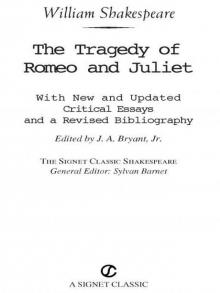 Romeo and Juliet
Romeo and Juliet As You Like It (Folger Shakespeare Library)
As You Like It (Folger Shakespeare Library)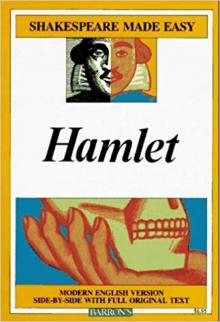 Hamlet
Hamlet Richard II (Folger Shakespeare Library)
Richard II (Folger Shakespeare Library)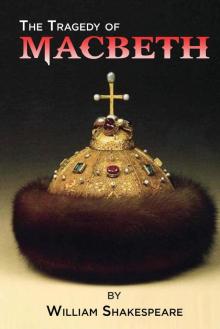 Macbeth
Macbeth Henry V
Henry V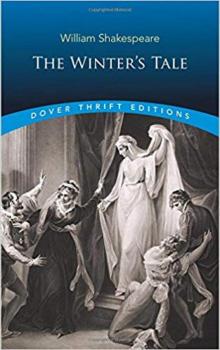 The Winter's Tale
The Winter's Tale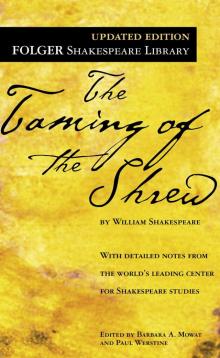 The Taming of the Shrew
The Taming of the Shrew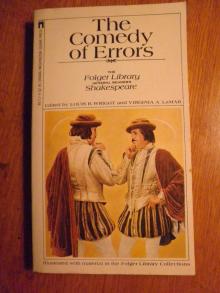 The Comedy of Errors
The Comedy of Errors King Lear (Folger Shakespeare Library)
King Lear (Folger Shakespeare Library)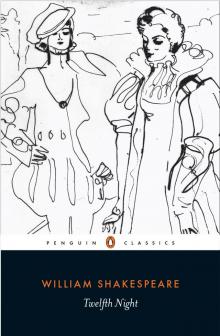 Twelfth Night
Twelfth Night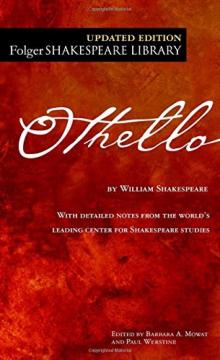 Othello
Othello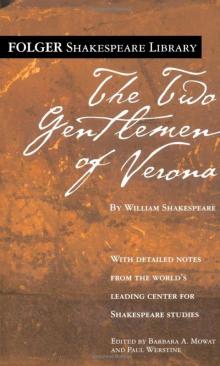 The Two Gentlemen of Verona
The Two Gentlemen of Verona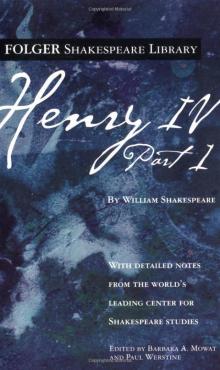 Henry IV, Part 1 (Folger Shakespeare Library)
Henry IV, Part 1 (Folger Shakespeare Library) King John/Henry VIII (Signet Classics)
King John/Henry VIII (Signet Classics)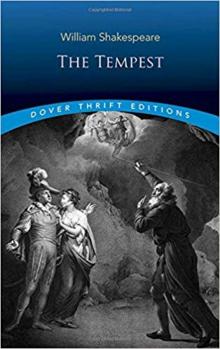 The Tempest
The Tempest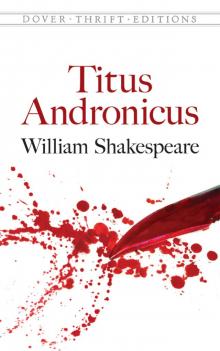 Titus Andronicus (Dover Publications)
Titus Andronicus (Dover Publications)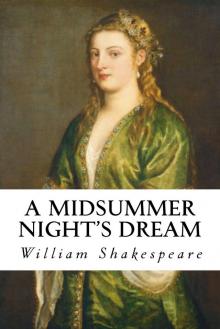 A Midsummer Night's Dream
A Midsummer Night's Dream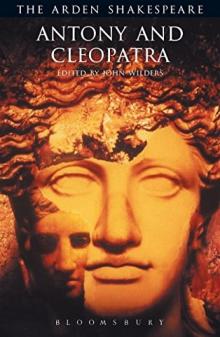 Antony and Cleopatra (Arden Shakespeare: Third Series)
Antony and Cleopatra (Arden Shakespeare: Third Series)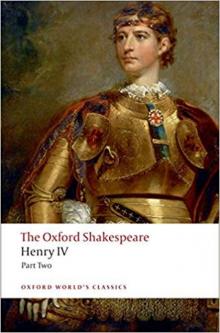 The Oxford Shakespeare: Henry IV, Part 2 (Oxford World's Classics)
The Oxford Shakespeare: Henry IV, Part 2 (Oxford World's Classics)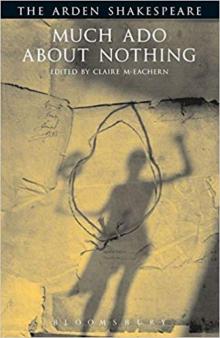 Much Ado About Nothing (Arden Shakespeare: Third Series)
Much Ado About Nothing (Arden Shakespeare: Third Series)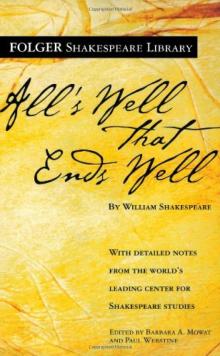 All's Well That Ends Well
All's Well That Ends Well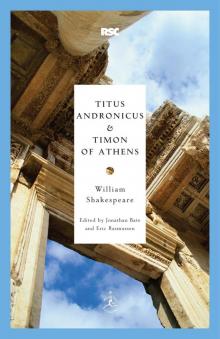 Titus Andronicus & Timon of Athens
Titus Andronicus & Timon of Athens Richard III (Modern Library Classics)
Richard III (Modern Library Classics) Coriolanus
Coriolanus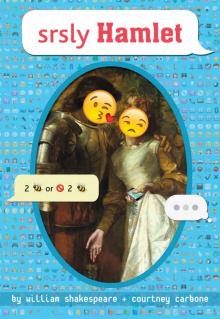 srsly Hamlet (OMG Shakespeare)
srsly Hamlet (OMG Shakespeare) The Merchant of Venice
The Merchant of Venice Richard III
Richard III Richard II
Richard II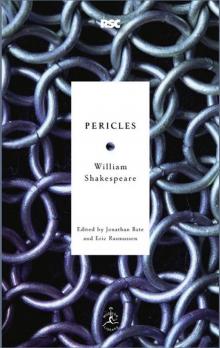 Pericles
Pericles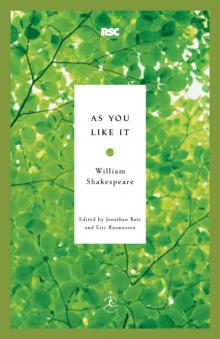 As You Like It
As You Like It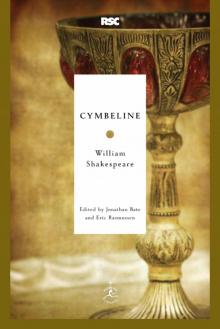 Cymbeline
Cymbeline Alls Wel that ends Well
Alls Wel that ends Well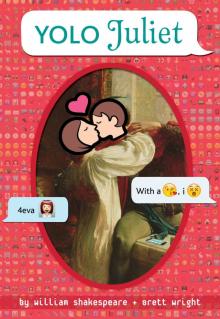 YOLO Juliet
YOLO Juliet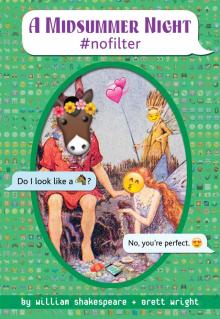 A Midsummer Night #nofilter
A Midsummer Night #nofilter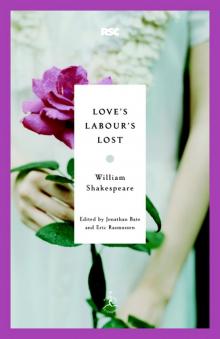 Love's Labour's Lost
Love's Labour's Lost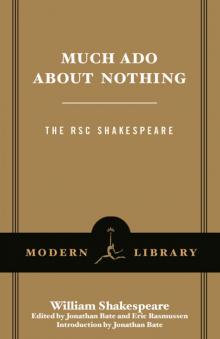 Much Ado About Nothing
Much Ado About Nothing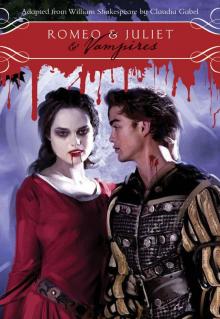 Romeo & Juliet & Vampires
Romeo & Juliet & Vampires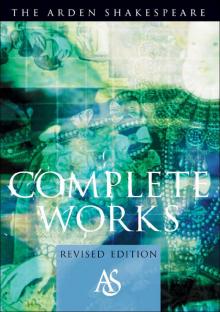 The Arden Shakespeare Complete Works
The Arden Shakespeare Complete Works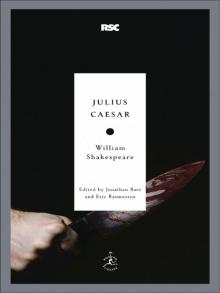 Julius Caesar
Julius Caesar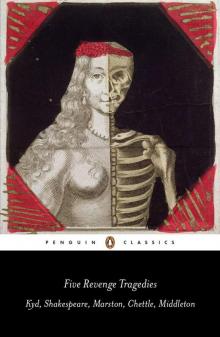 Five Revenge Tragedies: The Spanish Tragedy, Hamlet, Antonio's Revenge, The Tragedy of Hoffman, The Revenger's Tragedy (Penguin Classics)
Five Revenge Tragedies: The Spanish Tragedy, Hamlet, Antonio's Revenge, The Tragedy of Hoffman, The Revenger's Tragedy (Penguin Classics)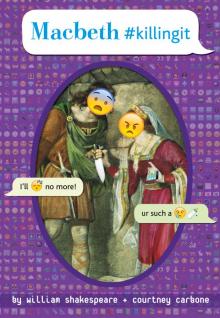 Macbeth #killingit
Macbeth #killingit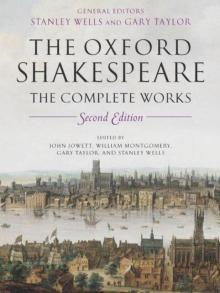 The Oxford Shakespeare: The Complete Works
The Oxford Shakespeare: The Complete Works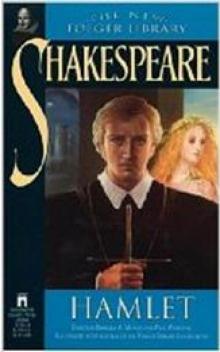 Hamlet, Prince of Denmark (Collins edition)
Hamlet, Prince of Denmark (Collins edition)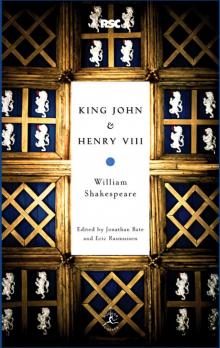 King John & Henry VIII
King John & Henry VIII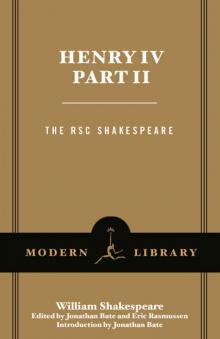 Henry IV, Part 2
Henry IV, Part 2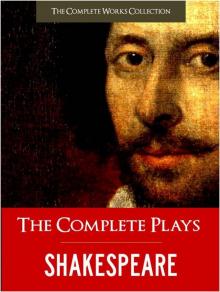 Complete Plays, The
Complete Plays, The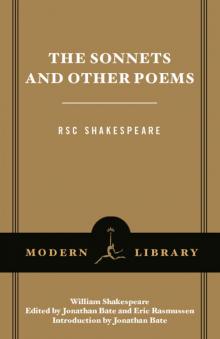 The Sonnets and Other Poems
The Sonnets and Other Poems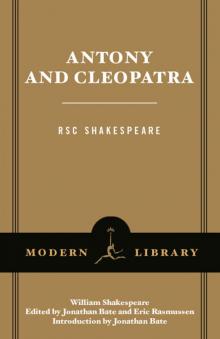 Antony and Cleopatra
Antony and Cleopatra Henry IV, Part 1
Henry IV, Part 1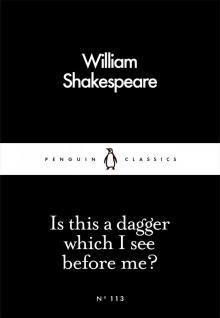 Is This a Dagger Which I See Before Me?
Is This a Dagger Which I See Before Me? The Complete Works of William Shakespeare In Plain and Simple English (Translated)
The Complete Works of William Shakespeare In Plain and Simple English (Translated)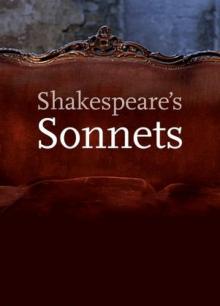 The Sonnets
The Sonnets